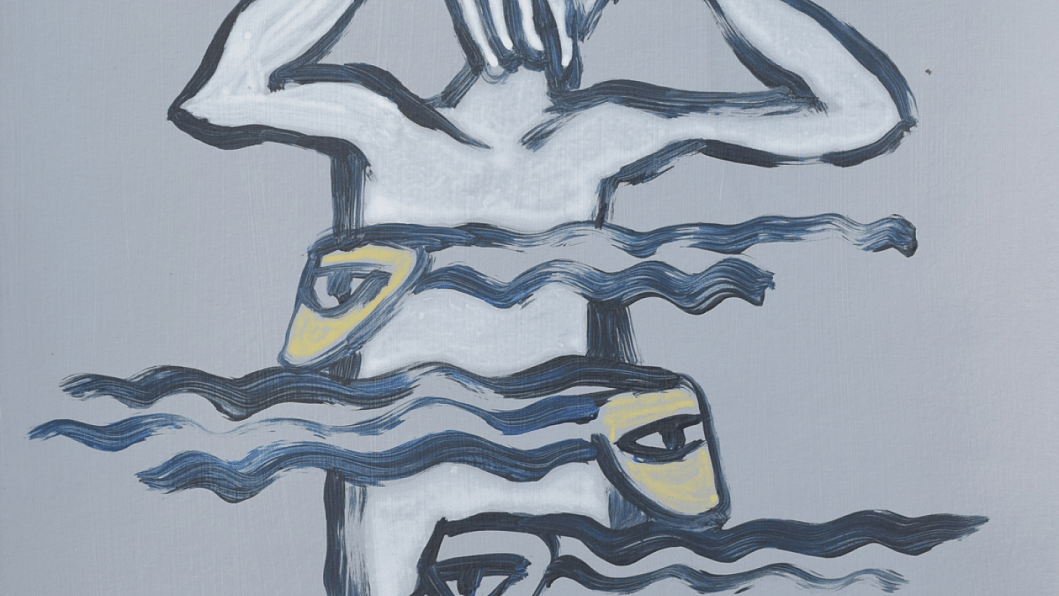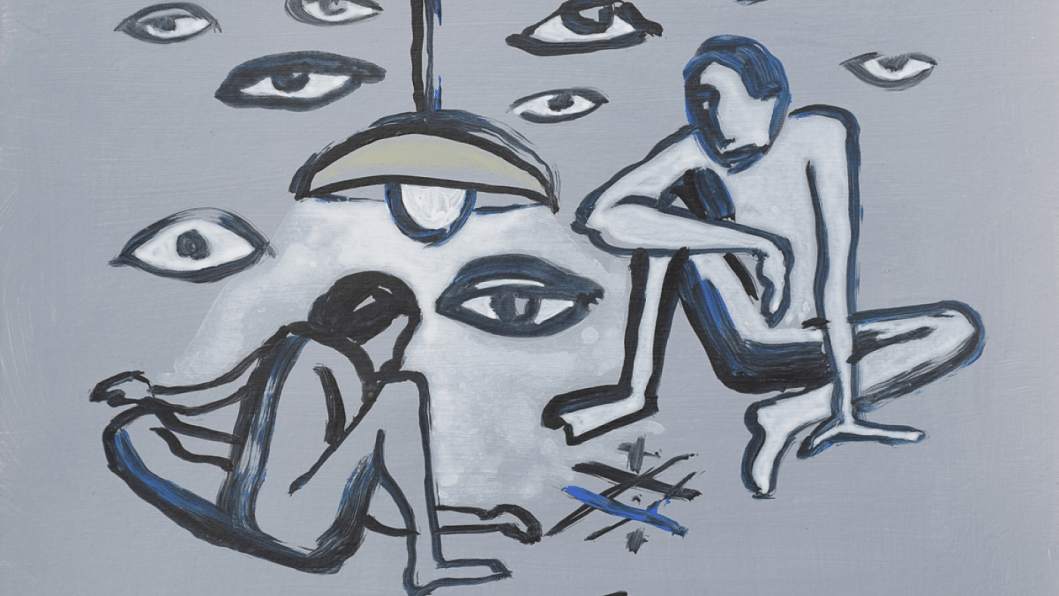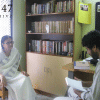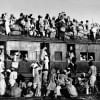The 1947 phenomenon—In search of new voices

The phenomenon called '1947 Partition' is described by Ayesha Jalal as 'a defining moment that is neither beginning nor end.' It has been 70 years since this defining moment which shaped the map, history, politics, culture and lives of the inhabitants of the entire subcontinent. The generations who experienced the cataclysm and those who have been born in the shadows of this moment are yet to comprehend the depth and breadth of it. It is a long time before we can understand the phenomenon, because there remain voices we haven't heard yet. There remain stories we haven't explored to date, there are implications we haven't examined in their entirety. Indeed, there are many of them, but one that we would like to bring attention to are the voices from Bangladesh, a country which experienced trauma, on one hand, while embracing its destiny with some delight and viewing this as a new beginning, on the other. The dream of a 'land of eternal Eid' of those who lived in the eastern part of Bengal never materialised and their hopes for an egalitarian society faded within a fleeting moment, but the scars remained, and the lines drawn on paper in a faraway land became a daily reality.
The Partition resulted in half a million to one million deaths along with the displacement of some 20 million people, making it the largest displacement of people in human history. But it also produced two nation-states, and drew physical borders which never existed before and which have not been erased since. Boundaries were created beyond the visible borders. Implications reverberate even after seven long decades.
We call '1947' a phenomenon. Although often referred to as 'the Partition' for convenience, it is hard to settle on an agreed description. How should one describe 1947? The map, borders, migration, new edifices—all that began to crystallise since February 1947 and took a life of its own by June 1947—tell us it was indeed a 'Partition.' It was also the retreat of a colonial power that ruled the vast land for almost 190 years and re-shaped the society and economy; therefore, 'decolonisation' is perhaps no less an important description, particularly when we see that it was just the beginning of a global process of imperial retreat. It was also 'independence'—as the day is celebrated in two countries—India and Pakistan. Each of these descriptions comes with a narrative of its own, with specified and built-in boundaries. They are both 'facts' and 'incomplete' at once; each seems to have its own teleology. The elusive completeness of them limits our understanding of a phenomenon, and distracts us from the significance of the event itself.
" Granted, the uber-nationalist discourse of the Pakistan era is gone in independent Bangladesh, but it has been replaced with a silence, a somewhat trivialisation of the phenomenon that has shaped the region and the country. 1947 is placed within the path of the ultimate destination of the establishment of independent Bangladesh.
These three approaches occasionally overlap, but one or the other claims prominence in the intersection of all these. Since the 1950s, the Partition remains a recurrent theme in South Asian fiction, non-fiction, oral histories, museum projects, films, etc., with these three approaches reproduced in many ways. Creative works, for example, the Train to Pakistan by Khushwant Singh or the short stories of Sadat Hasan Manto (particularly 'Toba Tek Singh') or the film-trilogy of Ritwik Ghatak and innumerable works in the Punjabi language have at times embraced the complexities. In academic and historical discourses of the past seven decades, partition narratives have witnessed three distinct generations.
The first generation is marked by its uber-nationalist tone and tenor underscoring the events that paved the way for the ultimate destination—independence or decolonisation. The central theme of this narrative is the victory of 'the nation'—either 'Indian nationalism' or 'founding of Pakistan as a Muslim homeland.' The 'two-nation theory' serves as the premise, either through reproduction of it or through a meek challenge to the framework. It is not too difficult to find examples of this strand of history. While history textbooks of schools and colleges mandated by respective authorities in India and Pakistan exemplify this approach, unfortunately it is not limited to these 'official' history books. For decades, this narrative remained dominant and wilfully ignored the trauma, agony, and plight of millions of people. The absence of the experiences of women, Dalits and subalterns during the Partition was a marker of this history too. They were relegated to the footnotes of history. History is understood to be the actions of leaders or great men and their glorious 'achievements' in the making of the nation.
After almost three decades of dominance, the nationalist historiography faced a challenge from the subaltern studies group in the early 1980s, when a different approach to view the Indian nationalist movement was presented. Although the Partition was not the focus of these studies per se, they did pave the way for unshackling the history from the elite nationalist discourse. The Partition soon became a topic of new historical approaches. A handful of researchers, for example Ayesha Jalal, broke the ice. Jalal's interjection came in the form of a revisionist reading of Jinnah's role in the 'Pakistan movement.' Works of authors like Urvashi Butalia, Ritu Menon and others, soon brought the necessary correctives to this skewed narrative. Urvashi Butalia's The Other Side of Silence, Ritu Menon and Kamla Bhasin's Borders & Boundaries: Women in India's Partition, Dilip Halder's Partition's Forgotten Victims: The Dalits of Bengal, to name but a few, introduced the voices of the marginalised and shed light on the plight of the people. Oral history was their primary method, but archival documents enriched their arguments. Thus, the second generation of the Partition narrative emerged and found a significant space in the conversation, particularly during the 50th year celebration of the 'Partition'/'decolonisation'/ 'independence'/'founding of a nation.'
But the second-generation narrative too, like their predecessors, had a serious shortcoming—'the Punjab bias' that focused almost exclusively on the traumatic experiences of people of Punjab. In some measures, Punjab and Partition became synonymous, although there was another region which experienced a similar, but perhaps less spectacular, fate.

The regional dimension of the Partition was forcefully placed in the historical arena by the seminal works of Joya Chatterjee, particularly through her book Bengal Divided. A few authors before her had their take on it, for example, Gyan Pandey (Remembering Partition: Violence, Nationalism and History in India); although their works didn't draw equal public attention, they did mark a departure from the extant discourse. This is the third generation of the narrative. This narrative brought Bengal into the mix, evidently not to the fore. Yet there remain two principal weaknesses: first, they do not address how 1947 has remained alive as a part of the long history, and second, East Bengal (now Bangladesh) remains absent in this discourse.
It is against this background that we have reached the 70th year of the Partition. This provides us an opportunity to examine the extant discourses about 1947 in Bangladesh. Granted, the uber-nationalist discourse of the Pakistan era is gone in independent Bangladesh, but it has been replaced with a silence, a somewhat trivialisation of the phenomenon that has shaped the region and the country. 1947 is placed within the path of the ultimate destination of the establishment of independent Bangladesh. It is commonly referred to as an example of the folly of the 'two-nation theory.'
If the Pakistan-era history of 1947 can be described as glorification and vindication of the two-nation theory, post-independence Bangladeshi history frames the phenomenon as a step towards its nullification. This dominant version of History (with a capital H), has been problematised by a few historians and political scientists to varying degrees; through the seminal work of Badruddin Umar on the language movement, Ahmed Kamal's groundbreaking work entitled State Against the Nation, Taj Hashmi's Pakistan as a Peasant Utopia: The Communalisation of Class Politics In East Bengal, 1920-1947, and Harun-or-Rashid's The Foreshadowing of Bangladesh: Bengal Muslim League and Muslim Politics 1906-1947, to name a few. But they are few and far between.

Creative works, for example, novels and short stories, of writers of Bangladeshi origin, in the past 70 years, indicate a different pathway. Novels such as Abu Ishaq's Surya Dighal Bari, Abul Fazal's Ranga Prabhat, Satyan Sen's Padachinha, Razia Khan's Bot Tolar Upannayash, Shahidullah Kaiser's Sangsaptak, Sardar Jainuddin's Onek Suryer Asha, Bidhyasta Roder Dheyu, Anwar Pasha's Neersandhani, Abu Zafar Shamsuddin's Sangkar Sangkirton, Shawkat Ali's Warish, Selina Hossain's Japita Jibon and Gayatri Sandhya, Hasan Azizul Huq's Sabitri Upkahyan O Shiuli, and Agunpakhai, Akhtaruzzaman Iliyas' Khoabnama, Tahmima Anam's A Golden Age, and Tanvir Mokammel's Dui Nagar take us on a different journey. While these novels, and numerous short stories, have laid a different path, historians and political scientists are yet to unshackle them from the dominant paradigms and speak in a different voice that delves into the histories (plural) of 1947 in then-East Bengal (now Bangladesh).
As Ayesha Jalal has reminded us, 1947 is not frozen in time; it hasn't ended or begun on a date. Vazira Fazila-Yacoobali Zamindar in The Long Partition and the Making of Modern South Asia and Yasmin Khan in The Great Partition have also underscored this. The phenomenon is present in various ways today. This cannot be overstated in a country which has experienced three partitions, a devastating famine costing millions of lives, and bears the inescapable fact that its map was drawn in 1947. The 1947 phenomenon, therefore, warrants contextualisation within contemporaneous politics and ongoing debates, especially about identity and the concept of nationhood. It is erroneous to think that at any moment of history there is only one imagination of nation; instead various imaginations of nation permeate the society. (The proposal of the United Bengal in the 1940s is a case in point.) One of these imaginations may, and often does, become dominant while others remain dormant. As such, the contestations between these imaginations influence the trajectory and need to be explored. Some recent works, such as Ananya Jahanara Kabir's Partition's Post-Amnesias: 1947, 1971 and Modern South Asia, Neilesh Bose's Recasting the Region: Language, Culture, and Islam in Colonial Bengal, and Lyli Uddin's unpublished dissertation In The Land of Eternal Eid: Maulana Bhashani and the Political Mobilisation of Peasants and Lower-Class Urban Workers in East Pakistan, c. 1930s-1971 point in that direction.
But a lot needs to be done. The 70th year of the 1947 phenomenon should serve as a reminder that being oblivious to a phenomonon of this magnitude does not serve the nation well, that an ahistorical, linear narrative that reinforces the political and social indifferences limits our understanding, and that a binary frame to understand a complex, layered defining moment only reveals our naïveté. This is why it is necessary to explore new voices which will bring new insights and place the people and the region called Bangladesh at the centre of the conversation of 1947. Long overdue public discourse on the 1947 Partition in Bangladesh will perhaps permit our present to engage with the past to accommodate our complex histories and identities.
What provides a glimmer of hope is that the 1947 phenomenon has received slightly more attention this year in Bangladesh than it did during the 60th or 50th year commemorations. But we should view it as just the beginning.
Ali Riaz is a professor at the Department of Politics and Government at Illinois State University (ISU), USA. His recent publication is entitled Bangladesh: A Political History since Independence (2016).
Fahmida Zaman did her master's in political science from ISU and is currently an executive of curriculum development at the Bangladesh Youth Leadership Centre, Dhaka.










Comments